10 Best Adventures of 1956
By:
August 7, 2016
Sixty years ago, the following 10 adventures — selected from my Best Fifties Adventure list — were first serialized or published in book form. They’re my favorite adventures published that year.
Please let me know if I’ve missed any 1956 adventures that you particularly admire. Enjoy!
- Alfred Bester’s The Stars My Destination (also published as Tiger! Tiger!, serialized 1956; in book form, 1957). If Heinlein’s Double Star, also published in 1956, is The Prisoner of Zenda in space, then The Stars My Destination is a proto-psychedelic sci-fi version of The Count of Monte Cristo. In the 25th century, personal teleportation — known as “jaunting” — has thrown the solar system’s social and economic order into chaos. During a war between the inner planets and the outer satellites, the Nomad, a merchant spaceship, is destroyed; the only survivor, a directionless loser named Gully Foyle, is cast adrift. He repairs the Nomad, and returns to Terra, though not before he’s captured by a cargo cult who tattoos his face with a tiger mask. He embarks on a life of violent crime, eventually transforming himself into the elegant Geoffrey Fourmyle — all the while seeking revenge on the captain of another merchant ship, the Vorga, who’d ignored his distress signal when he was marooned. Meanwhile, we learn that the Nomad had been carrying “PyrE”, a telepathy-triggered explosive that could mean the end of humanity. Fun fact: Originally serialized in Galaxy magazine, Bester’s novel — with its dark vision of powerful megacorporations, and the cybernetic enhancement of the body — is a precursor of cyberpunk.
- Edward Eager’s YA fantasy adventure Knight’s Castle. The second installment in Eager’s famous Magic series is my favorite. Sent to stay with their more sophisticated cousins, Eliza and Jack, Roger and Ann are delighted with a toy castle play set they’re given. After they see the movie Ivanhoe (released in 1952, it stars Robert Taylor as Sir Wilfred of Ivanhoe, Elizabeth Taylor as Rebecca, Joan Fontaine as Rowena, and George Sanders as Sir Brian De Bois-Guilbert), the four children use the castle set to play an elaborate imaginative game riffing on Ivanhoe — one in which not everything goes the way it does in Walter Scott’s tale. At night, on several occasions, the cousins find themselves transported into the world they’ve created… where they must set things straight. (The original LARP?) As with all of Eager’s Magic books, the trick is figuring out the rules by which this magical alternate reality is governed. Fun fact: The other titles in this series include Half Magic (1954), Magic By the Lake (1957), The Time Garden (1958), Magic Or Not? (1959), The Well-Wishers (1960), and Seven-Day Magic (1962). Eager was a huge fan of E. Nesbit’s magical adventures, and pays tribute to Nesbit here.
- Robert Heinlein’s sci-fi adventure Double Star. Lawrence “The Great Lorenzo” Smith is a brilliant mimic… but he’s down on his luck. So when he’s approached by aides to John Joseph Bonforte, one of the most prominent politicians in the solar system, about impersonating Bonforte — who’s been kidnapped by his opponents on the eve of a general election — he agrees, even though he’s a Martianphobe who disagrees with Bonforte’s campaign to enfranchise Mars. Yes, this is The Prisoner of Zenda in space; hokey material, but Heinlein handles it very well. Smith must first fool Martians, during a fraught ceremony via which Bonforte is adopted into a Martian tribe; and that’s the easy part. Once it becomes apparent that Bonforte won’t be able to appear in public for some time, Smith must learn Bonforte’s mannerisms and background story, and fool the solar system’s Emperor. Political conspiracies, diplomatic maneuvers — it’s not Starship Troopers, but it’s just as exciting. Fun fact: Serialized in Astounding Science Fiction and published in hardcover the same year. Double Star was awarded the 1956 Hugo Award for Best Novel — the author’s first.
- Hergé’s Tintin adventure Coke en stock (The Red Sea Sharks, serialized 1956–1958; as an album, 1958). When Abdullah, the terrifyingly naughty son of Mohammed Ben Kalish Ezab, the Emir of Khemed, turns up at Marlinspike, because his father has been overthrown by Sheikh Bab El Ehr, Tintin and Haddock decide to help restore the Emir to his throne. Flying to the Middle East, however, they narrowly escape being blown up. Then, as they ride on horseback to the Emir’s hideout, armoured cars and fighter planes — sent by “Mull Pasha”, who is actually Tintin’s old nemesis, Dr. Müller — are sent to intercept them. Eventually, Tintin and Haddock learn that Sheikh Bab El Ehr is backed by an oddly familiar businessman, the Marquis di Gorgonzola, who offers transport to African Muslims on the pilgrimage to Mecca… and then sells them into slavery. (Khemed is a key part of Gorgonzola’s scheme.) En route to Mecca, their sambuk is attacked by fighter planes; they shoot one down, and rescue its pilot — Piotr Skut, an Estonian mercenary. All of which is just a build-up to their discovery of a shipload of slaves! Fun fact: Hergé developed the plot for The Red Sea Sharks after reading a piece of investigative journalism about the continuing existence of the slave trade within the Arab world.
- Donald Hamilton’s espionage adventure Assassins Have Starry Eyes (also known as Assignment: Murder). Before striking gold with his Matt Helm series, Hamilton wrote a couple of thrillers in the mold of Buchan’s The Thirty-Nine Steps and Household’s Rogue Male — that is, they feature highly competent but essentially nonviolent protagonists who unwillingly find themselves involved in assassination plots. Here, James “Greg” Gregory, a Los Alamos mathematician, is shot while out hunting. While recovering in the hospital, another attempt is made on his life — by the would-be assassin’s fiancée, Nina. When another scientist is killed, and Greg’s estranged wife goes missing, he heads into the New Mexico wilderness, allowing himself to be captured. Greg and Nina wind up working together… against domestic saboteurs, traitors, and other villains. Fun fact: Anthony Boucher called Hamilton’s spy thrillers “as compelling, and probably as close to the sordid truth of espionage, as any now being told.”
- Henry Treece’s pre-historical adventure The Golden Strangers. Garroch, chieftain of a primitive, flint-using tribe of Britons, does his part to sustain the “Barley Dream,” a web of ritual and human sacrifice without which his tribe’s crops cannot not be made to grow. When the golden strangers — fair-haired Celts, from the continent, bearing metal weapons — attempt to invade, Garroch kills their leader and takes his daughter, Isca, as his bride. Or is Isca, a woman to be reckoned with, manipulating him for purposes of her own? Whose gods, and way of life, will triumph? Rosemary Sutcliff, whose Matter of Britain novels are better remembered today than Treece’s, called this “one of the best as well as one of the strangest historical novels I have ever met.” Indeed, Treece’s short epic combines superstition, magic, and brutal violence; it’s both realistic and fantastical. Fun fact: First title in Treece’s Celtic Tetralogy. Treece is best known today for his juvenile historical novels, particularly those set in the Viking age. His other 1956 novel, The Great Captains, is one of the more original retellings of the Arthurian mythos.
- John Christopher’s post-apocalyptic adventure The Death of Grass. In this updating of J.J. Connington’s Radium Age eco-catastrophe Nordenholt’s Million, a plant virus infects the staple crops of West Asia and Europe such as wheat and barley — that is, all of the grasses. Which kills off the cattle, as well. At first, England prides itself on how well-disciplined its response to the crisis is, compared with that of Asian nations… but all too soon the British government resorts to martial law mass executions, and then it’s anarchy. With their families in tow, John Custance and his friend, Roger Buckley, make their way across a savage, chaotic England. They aim to reach the safety of John’s brother’s potato farm in an isolated northwestern valley — where they’ll survive on potatoes, beetroots and fresh water — and along the way, they gather an entourage of others seeking sanctuary. Day by day, however, the group’s civilized moral code decays. When they reach the heavily defended farm, and John’s brother’s won’t allow the whole group to stay there, what will they do? Fun fact: John Christopher (Sam Youd)’s second novel; published in the United States the following year as No Blade of Grass. It was adapted, under that title, as a 1970 British-American science fiction movie directed by Cornel Wilde.
- Hammond Innes’s sea-going adventure The Wreck of the Mary Deare. When salvager John Sands boards an enormous, rusty and leaking freighter — the Mary Deare — which has been set afire, and abandoned by its crew in a dangerous section of the English Channel, he discovers the ship’s first officer, Gideon Patch, trying to run the ship on his own. The harsh, exhausted, half-crazed Patch has stayed aboard, or so he claims, in order to prove that the ship was deliberately sabotaged, by its owners, in order to collect insurance on cargo that had secretly been off-loaded at Rangoon. (What was loaded into the holds, and why did the captain first appear covered in coal dust?) Patch needs help running the ship aground on rocks to the south of the Channel Islands. Although doing so will void his salvage claim, and although Sands decides to help. When they return to London, Patch is brought before a board of inquiry to determine what happened. Finally, there’s a race to return to the ship, in order to prevent the ship’s owners from destroying the evidence of their fraud. Fun fact: The novel was adapted in 1959 as a movie of the same title, starring Charlton Heston as Sands and Gary Cooper as Patch; Michael Anderson directed. Thriller author Eric Ambler wrote the screenplay.
- Arthur C. Clarke’s sci-fi adventure The City and the Stars. A Stapledonian epic, which illustrated two points important to the author: our curiosity about the world/universe is what makes us human; and organized religion retards humankind’s progress. In Diaspar, a billion-year-old, self-sufficient domed city located on Earth, Alvin is a “Unique.” Despite living in a utopian, perfectly regulated social order (run by a super-computer), in which human consciousnesses can be downloaded into new bodies, and are therefore immortal; and despite having been raised in a culture that encourages incuriosity and terror about the outside world, he dreams of exploration. Once he finally escapes Diaspar, Alvin’s curiosity is richly rewarded. Elsewhere on Earth, he finds another city-state — Lys — that is less reliant on technology, and whose citizens are telepaths. He discovers that Earthlings once traveled the stars, only to be forced back to their planet by aliens; and once offworld, Alvin discovers civilizations and entities that beggar belief. Will he keep going? Or return to Diaspar, as a prophet? Fun fact: We’ve seen sci-fi dramatizations of Plato’s Allegory of the Cave before, for example in Gabriel De Tarde’s 1884 novella Underground Man; and the meme appears frequently in YA sci-fi novels of the Sixties and Seventies. Clarke’s imagination regarding future technologies, however — which we’d now recognize as, for example, 3D printing, wireless communication and energy transfer, and genetic engineering — is truly original and far-out.
- Ed McBain’s crime adventure Cop Hater. In the first installment in McBain’s long-running (~50 titles, over as many years) 87th Precinct series, detectives Steve Carella and Hank Bush respond to reports of a shooting, only to discover one of their own dead on the street. Soon, another detective is killed… and then, Bush too. Though he’s no genius, Carella figures out who’s behind all this: a cop hater! So in his persistent way, he does what it takes to catch the perp. Set in an unnamed, but New York-like city, Cop Hater would provide a template for future police procedurals, including cop shows like Hill Street Blues — which McBain furiously condemned as a ripoff. (Carella also reminds me of another not-bright, but streetwise and unflagging, fictional New Yorker: Stan Lee and Jack Kirby’s Ben Grimm, aka The Thing. For one thing, both of them are married to beautiful disabled women, in Carella’s case the deaf-mute Teddy.) Here, we don’t find the romance of postwar detective fiction… just the flop sweat and flat feet of ordinary cops doing their jobs. Fun fact: The author, Evan Hunter (also not his birth name), wrote the 1954 bestseller Blackboard Jungle; and he would go on to write the screenplay for Hitchcock’s 1963 film The Birds. Akira Kurosawa’s terrific 1963 police procedural, High and Low, was loosely based on McBain’s 1959 novel King’s Ransom.

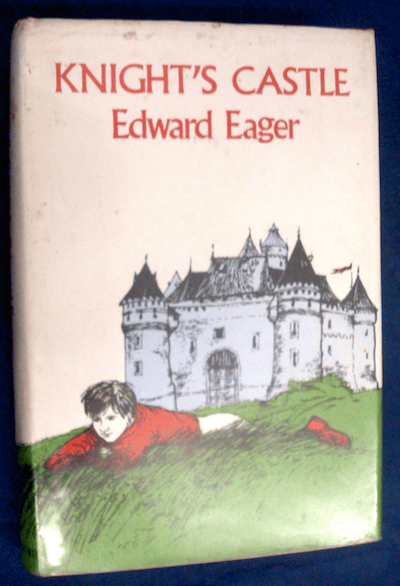
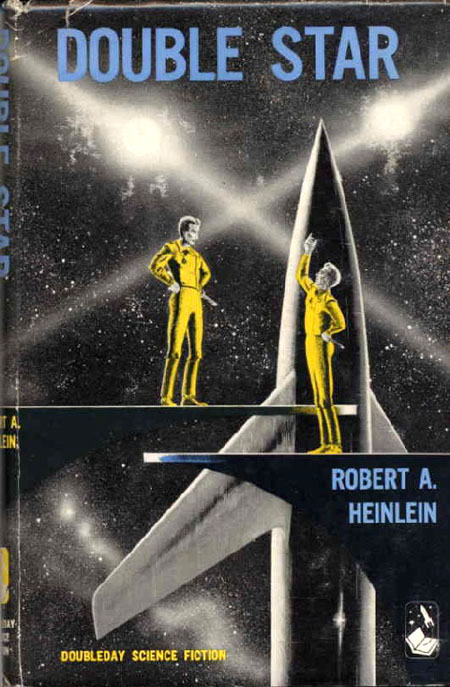
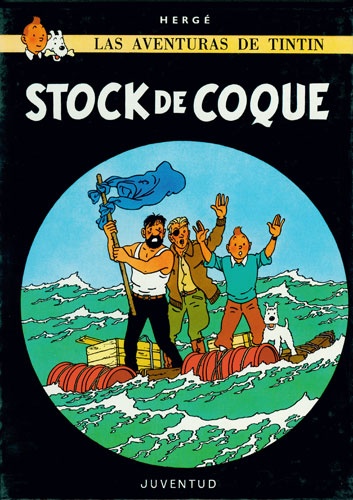
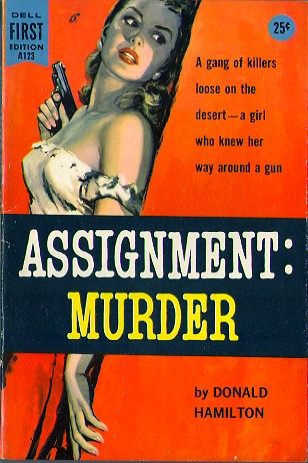
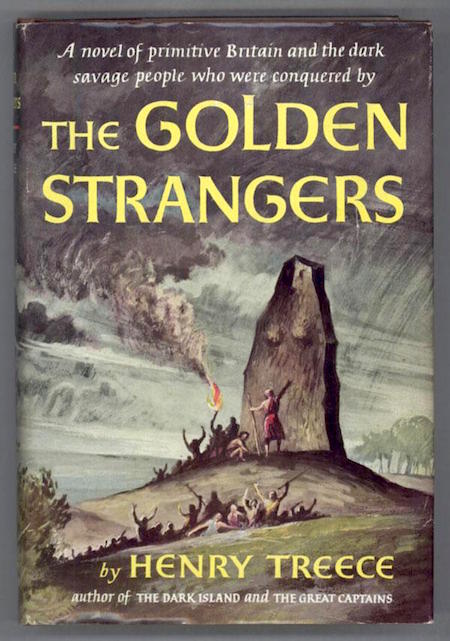
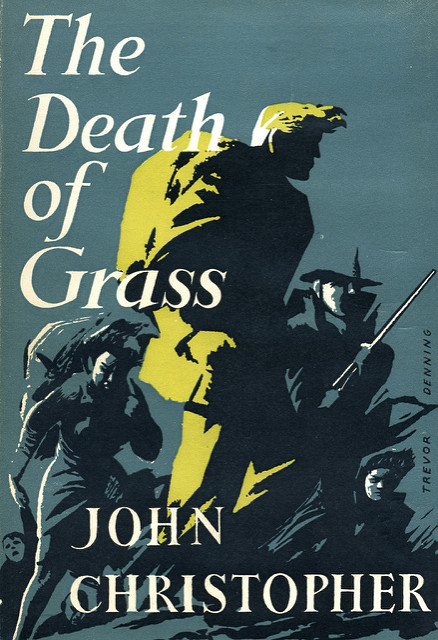
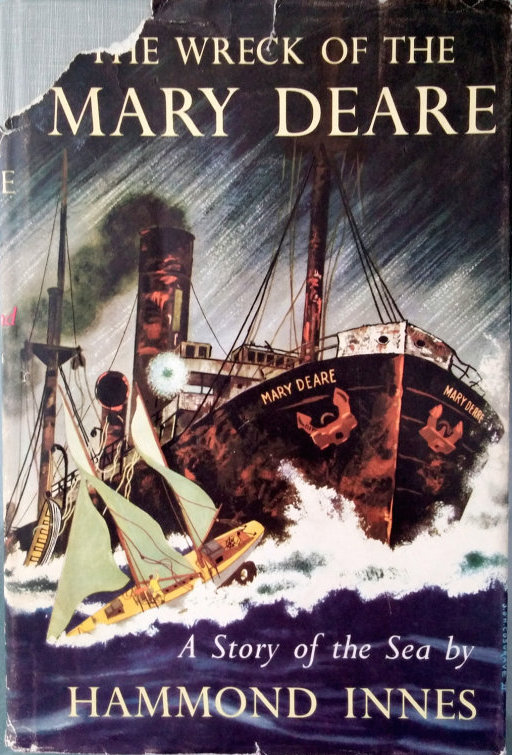

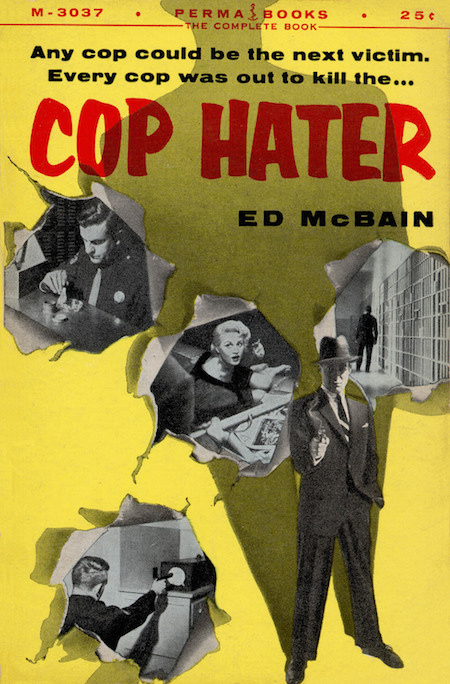
JOSH GLENN’S *BEST ADVENTURES* LISTS: BEST 250 ADVENTURES OF THE 20TH CENTURY | 100 BEST OUGHTS ADVENTURES | 100 BEST RADIUM AGE (PROTO-)SCI-FI ADVENTURES | 100 BEST TEENS ADVENTURES | 100 BEST TWENTIES ADVENTURES | 100 BEST THIRTIES ADVENTURES | 75 BEST GOLDEN AGE SCI-FI ADVENTURES | 100 BEST FORTIES ADVENTURES | 100 BEST FIFTIES ADVENTURES | 100 BEST SIXTIES ADVENTURES | 75 BEST NEW WAVE SCI FI ADVENTURES | 100 BEST SEVENTIES ADVENTURES | 100 BEST EIGHTIES ADVENTURES | 75 BEST DIAMOND AGE SCI-FI ADVENTURES | 100 BEST NINETIES ADVENTURES (in progress) | 1994 | 1995 | 1996 | 1997 | 1998 | 1999 | 2000 | 2001 | 2002 | 2003 | NOTES ON 21st-CENTURY ADVENTURES.
